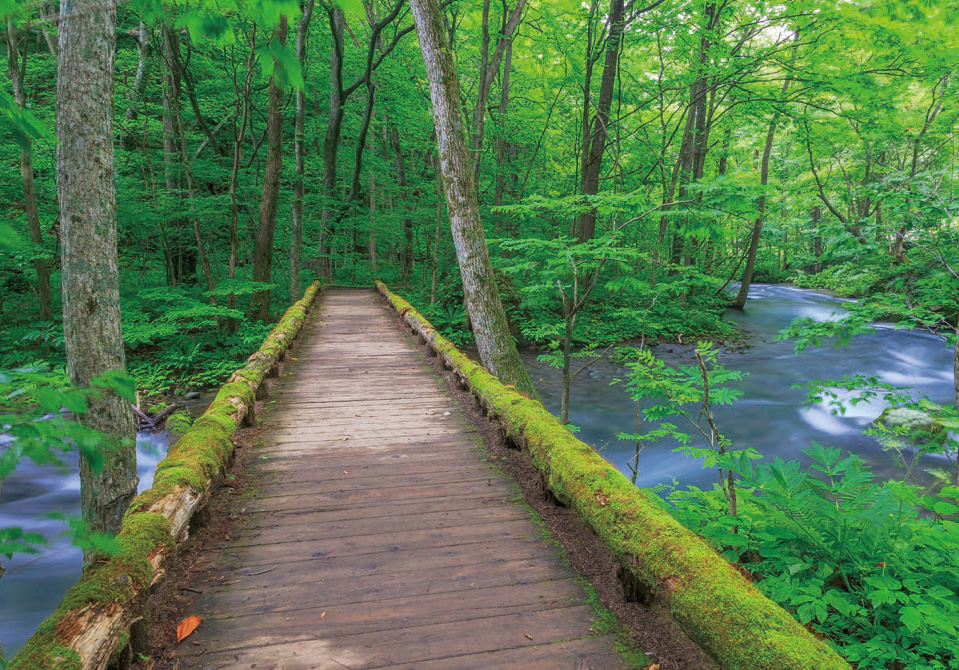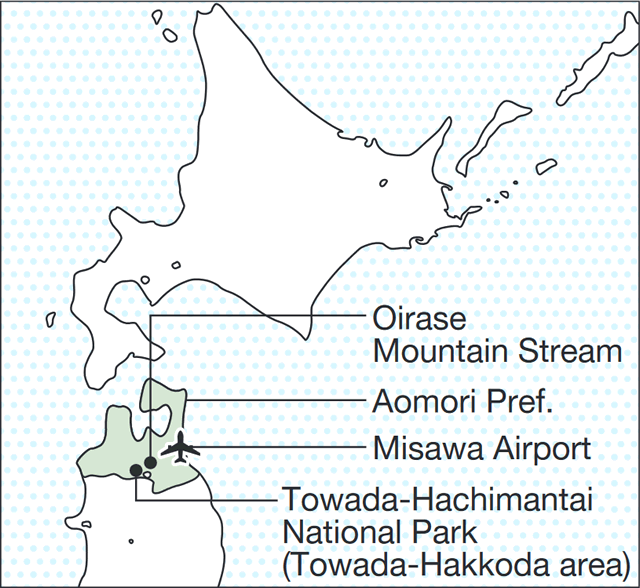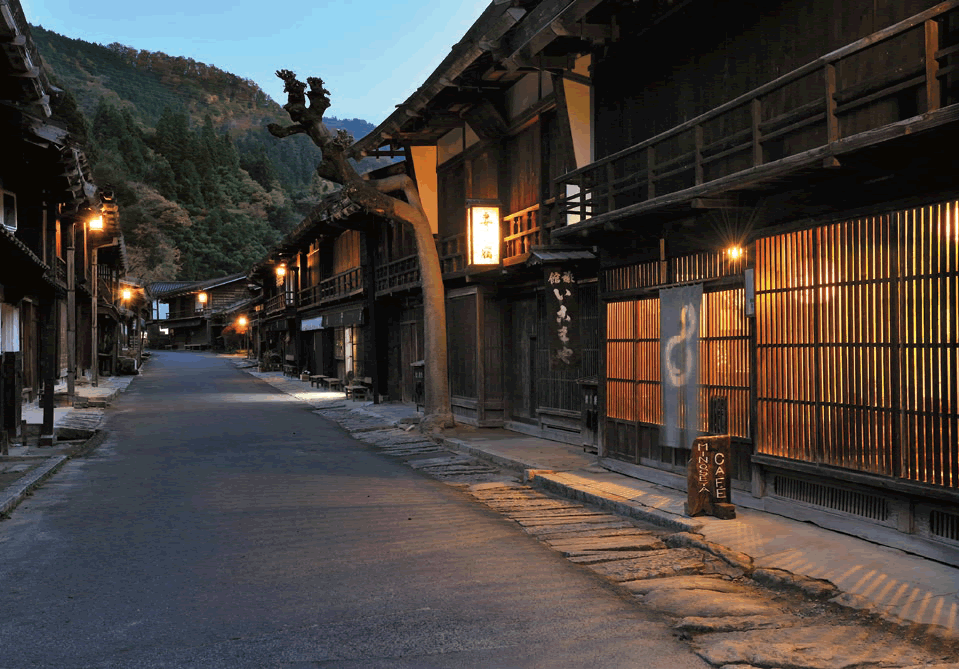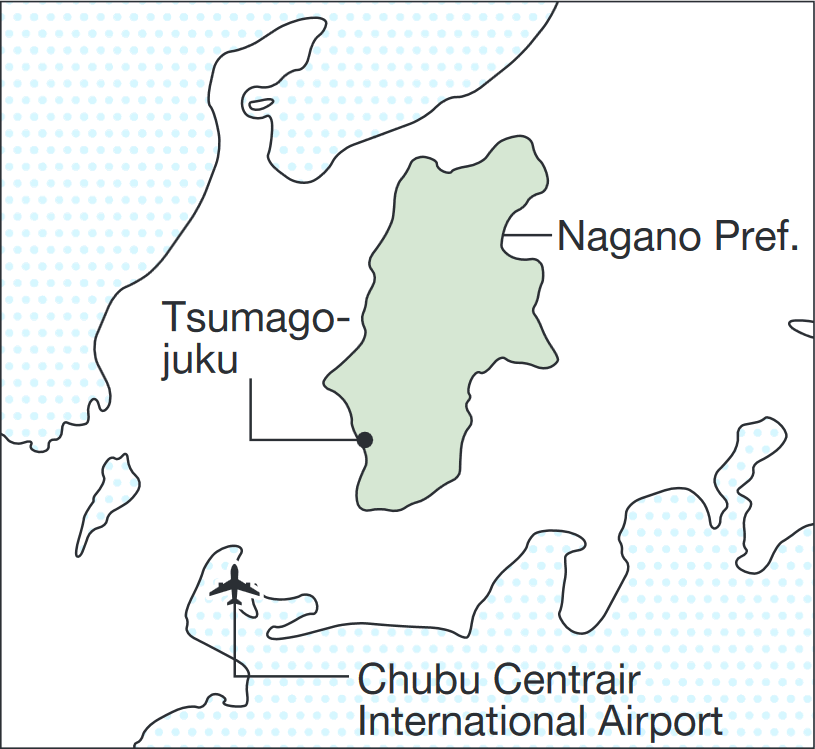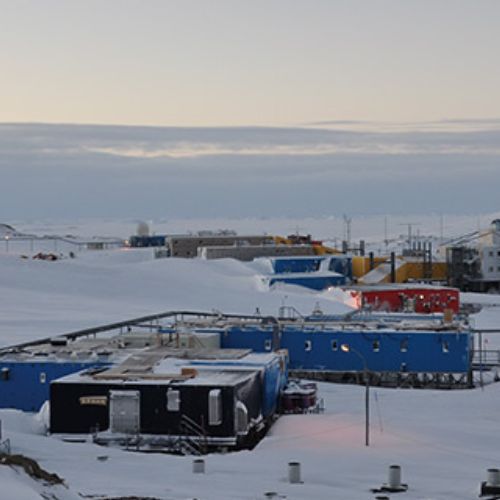Oirase Mountain Stream: Aomori Prefecture
Aomori Prefecture is at the northern tip of Honshu, the largest of Japan’s four major islands. Here you can find a section of the Towada-Hachimantai National Park, rich in scenes of natural splendor, such as the beautiful Oirase Mountain Stream (Oirase Keiryu). The appearance of the area changes day by day and is especially beautiful from late spring to early summer, when the leaves are fresh and green. Along its 14 kilometers (around nine miles), the mountain stream also offers a wide range of aspects—some precipitous and some peaceful. While hiking or cycling along the river trail, you can spot a dozen waterfalls and even wild Japanese serows (Nihon kamoshika ). Looking for some time away from city life in the concrete jungle? Oirase—just two and a half hours by plane and car from Tokyo’s Haneda Airport—will give you a truly refreshing experience.


























